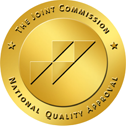Content reviewed by Karen Rubenstein, LMFT
Data from the Centers for Disease Control and Prevention (CDC) indicated that the number of drug overdose deaths in the United States has surpassed 100,000 annually.
From April 2019 to April 2020, there were an estimated 78,056 overdose fatalities, while from April 2020 to April 2021, there were an estimated 100,306. While overdose deaths have always been a concern, the last several years have brought to light how many lives are lost and affected by overdose. As the years go on, we must acknowledge the root causes of these overdose deaths and actively work to prevent these tragedies from occurring in the future.
What is an Overdose?
An overdose occurs when an individual takes more than a standard, regular or recommended dose of something. In the context of alcohol and other drugs, overdose can result from taking too much of a drug. Overdoses may result in severe, harmful symptoms, which can be fatal.
Intentional vs. Accidental Overdose
It is imperative to understand that there are two different causes of overdose: intentional and accidental.
An intentional overdose happens when an individual takes too much of a drug on purpose. They may do so to achieve the most potent effects of a drug. Individuals may also overdose with suicidal intent.
An accidental overdose is an overdose that occurs by accident or by mistake. For example, a young child may accidentally consume a prescription medication. However, most accidental overdose deaths occur from consuming illicit drugs contaminated with more potent drugs. In the cases of these overdose deaths, fentanyl may be the culprit.
Concerns With Fentanyl
Fentanyl is a powerful synthetic opioid. As a pharmaceutical, it may be used in medical settings for pain management. Fentanyl is 50 to 100 times stronger than morphine, an already abused opiate drug. Such potency makes the recreational and illegal use of fentanyl incredibly problematic.
Most cases of fentanyl-related overdose and death are linked to illegally manufactured fentanyl. The drug is sold through illegal drug markets for its powerful effects and combined with other drugs to increase profits. Manufactured fentanyl is cheap, which is why sellers often “cut” their substances with fentanyl.
However, a lethal dose of fentanyl is equivalent to four grains of sand. Drug sellers are not worried about the health and well-being of their buyers. Instead, they are concerned about their increasing profits. This greed mindset is why buyers are often unaware that the substances they are receiving are contaminated. Sadly, too many of these circumstances result in avoidable, unintentional overdose deaths.
Warning Signs of Overdose
Overdoses can happen anywhere at any time. The key to sustaining life is responding as quickly as possible when it comes to overdose. It is essential to recognize the warning signs of an overdose to identify one and know how to react appropriately.
Warning signs of an overdose may look like the following:
- Unconsciousness or inability to wake up
- Limp body
- Slow, shallow or no heartbeat
- Very small or pinpoint “pinned” pupils
- Falling asleep or chronic drowsiness
- Pale, blue, cold or clammy skin
- Choking
- Snoring
While recognizing an overdose may be difficult, it is crucial to identify any signs of unconsciousness or difficulties with breathing. Try to keep the person awake by shouting or rubbing their breastbone with your knuckles. Inform a bystander to call 911 as soon as possible. A medical professional must evaluate anyone who has experienced an overdose to ensure no further health complications.
How You Can Prevent Overdose Deaths
The increase in overdose deaths emphasizes ensuring that people understand the risks involved with using drugs. Additionally, it can help people recognize the resources available to prevent overdose and overdose-related deaths.
The Department of Health and Human Services (HHS) defines four necessary strategies to prevent overdose. These strategies include:
- Primary prevention of substance use and associated substance use disorders. Individuals in all communities must have access to prevention activities and effective treatment programs for substance use.
- Harm reduction for those that use substances. Harm reduction is critical to keeping individuals that use drugs alive and as healthy as possible. Harm reduction involves reducing stigma, having access to high-quality harm reduction services and decreasing the adverse side effects of substance use. For overdose prevention, having naloxone on hand is essential. You can complete Narcan training online, and as an incentive, you will receive free doses of naloxone.
- Evidence-based treatment for individuals that are struggling with substance use. Treatment must involve relapse prevention strategies, such as mindfulness techniques learned in holistic therapies.
- Recovery support for all. Support services can aid in preventing relapse and result in better long-term physical and mental health outcomes. Recovery support is essential for individuals recovering from substance use problems, mental health disorders and trauma situations, such as grief.
At Casa Palmera, we offer collaborative care to our patients. We want to help you heal from the underlying causes that led you to substance use and other co-occurring disorders. We provide a compassionate recovery community that will help support you as you work to heal. With your commitment to recovery, you can help prevent overdose deaths from occurring in your life. To learn more about our treatment programs, contact us today.




